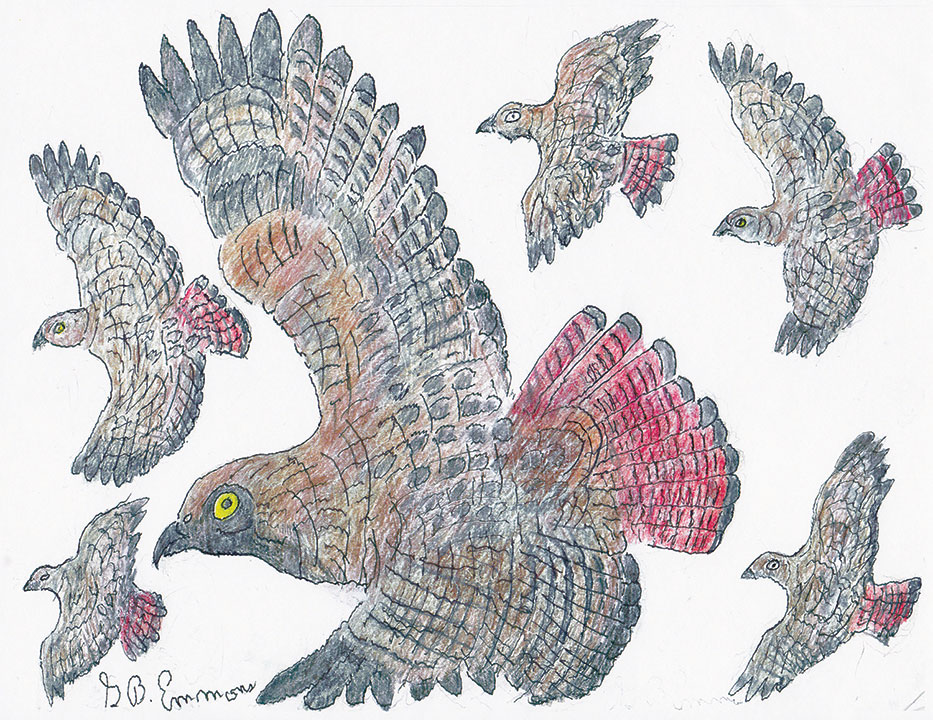The red-tailed hawk is commonly seen by birdwatchers on the south shore of Buzzards Bay soaring high above open country fields or circling high over suburban cities. It is one of the largest birds of prey with a 4-foot wingspan and high profile overhead, searching for something to eat.
Its diet consists of small rodents such as voles, squirrels, mice, rabbits, shrews, amphibians, reptiles, and birds, especially easy-to-spot red-winged blackbirds. Its high degree of predatory skill to take a large variety of prey was greatly admired by Native Americans, who honored their place in the scheme of predation with the title of its elevated place in the avian wild as “the red hunter.”
Birdwatchers have a descriptive, official vocabulary for groups of birds that go back in the English language for some 500 years. They are in continuous use to this very day, like a gaggle of geese, a murder of crows, and a kettle of hawks, as in my illustration.
Sometimes a group of red-tails is also given the title of a caste, or a boil, when at dawn they boil up from the ground into high altitudes on thermals of air pockets rising from the morning sun and warming up air currents of cold, overnight air. This describes the red-tails’ habit of gaining elevation to widen visibility of a field of observation.
The red-tail also gets attention in birdwatchers with an elaborate aerial courtship display while matching up before nesting with a female. The male attracts mating attention with dynamic acrobatics of speed and agility in a wide circle until the female joins him. Then they both tip their wings before diving down to earth at high speeds, just as the bald eagle is known to pull out of the dive before hitting the ground.
Actual breeding of red-tails follows extensive acrobatics to become monogamous to remain together for the rest of their lives, as many other wild birds like Canada geese.
However, the most moving, spectacular red-tailed hawk gathering and geographical movement is the autumnal migration that often makes up the early November sky. It may appear anytime between 8:00 am and 4:00 pm. It can be seen from high ridges and points of coastal Buzzards Bay with a history of seasonal sightings.
Flights tend to be irregular when making up with small numbers, but as they move in common destination, they merge with others, and tens become hundreds and then thousands, all in spaced-out formation between individuals.
With your binoculars, what you are watching in motion before your very wondering eyes is often prompted by weather and atmospheric pressure in sync with spheres of planetary powers in the heavens, as witnessed from your own bird-watching station on earth.
By George B. Emmons
